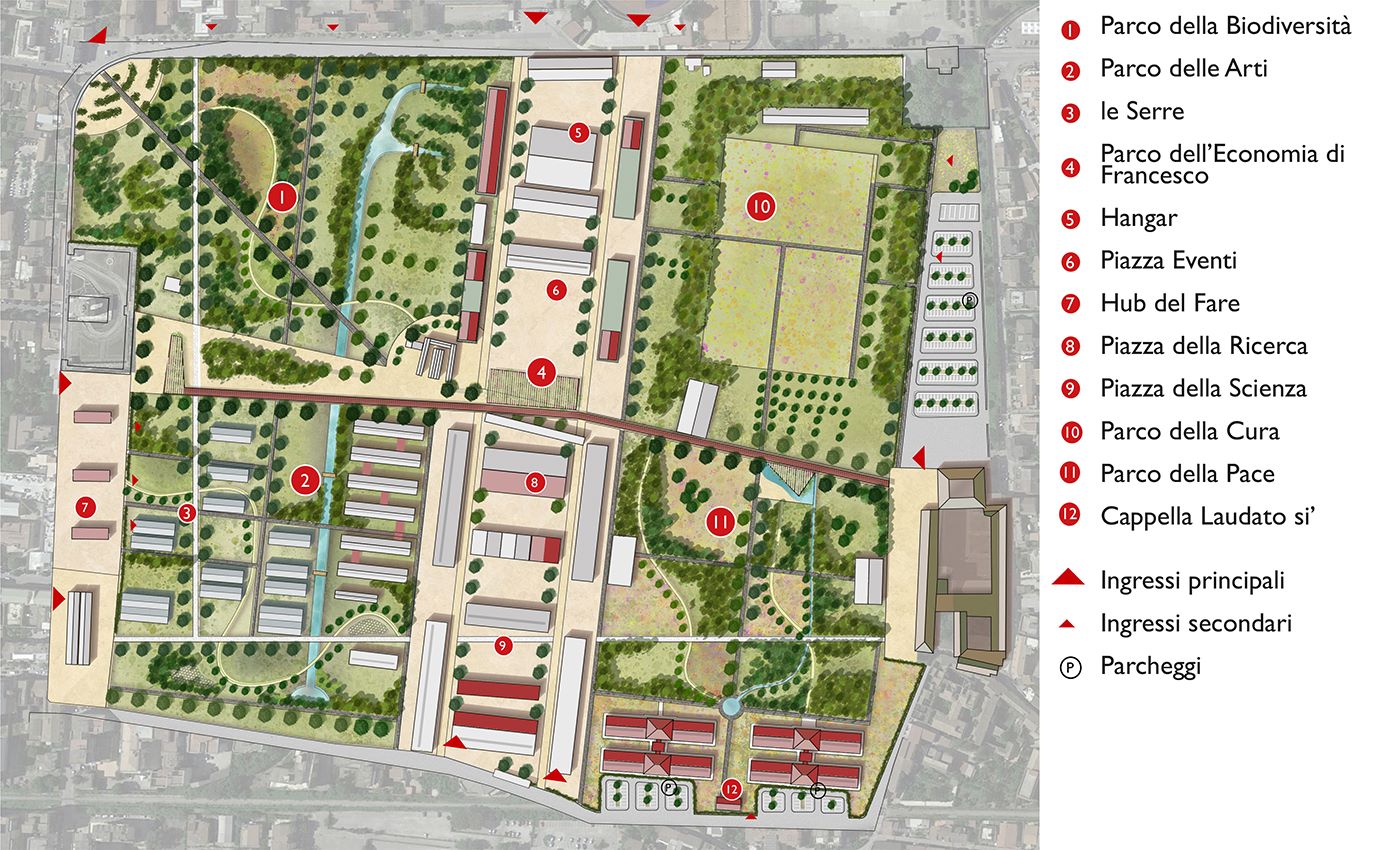‘From the Field of Mars to Campo Laudato Si’ Caserta: a green park for integral ecology, but also a social and cultural pole’: the project of urban innovation presented by the international architectural and urban planning firm Alvisi Kirimoto in Caserta is so complex and innovative that requires an elaborate description consisting of a lot of words.
In fact, it concerns the restoration and redevelopment plan of the Ex-Macrico area, commissioned by the Curia of Caserta – the current owner of the site – to launch a process of sustainable urban development in this former military district that is now abandoned. The area covers a surface of more than 324,000 m2, at the east end of the road axis of Corso Trieste, the main road of the city leading west to the Royal Palace of Caserta.

Owing to its strategic position as far as urban planning is concerned – i.e. only 15 minutes on foot from the city centre – the work will create a nodal point connecting the Royal Palace, the historic centre and the new expansion areas, and a potential green lung for the city.
The project is made of green infrastructures for biodiversity, as well as social and economic infrastructures designed for activities linked to personal care (health and sport), hospitality, culture, education, innovation and technology transfer for the part that will be only partially regenerated. As far as energy is concerned, the work aims at being self-sufficient, through the creation of a renewable and joint energy community.

The heart of the proposal is a drastic reduction of the existing volume in favour of an open urban park for the community, where the green fabric unifies the elements and the abandoned sites become green, creating an ecosystem of relationships. The green infrastructure, connected to the sustainable mobility networks of the territory and supported by a parallel digital infrastructure available to everybody, will turn the area into a people-oriented place for psychophysical well-being, artistic production and cultural welfare.
The buildings made of metal sheets – used as tool sheds and lacking any historical and building value – will be demolished, while the listed masonry buildings will be restored. The Campo Laudato Si’ Caserta will become a park but also a museum of industrial archaeology, where visitors will be able to relive the history of this place simply by walking among the old restored and re-functionalized buildings.

The designers identified five main working areas, all linked through a network of pedestrian and cycle paths, squares and equipped outdoor spaces. The first one, in the north-east, consists in the Parco della Biodiversità, where the natural element prevails, and which will house an experiential natural park and a sensory museum open to the city and linked to the surrounding urban fabric. Then, the Parco delle Arti, in the south-west, where the activities related to entertainment and cultural production will take place, with exhibiting spaces to share artistic and artisan knowledge. The Parco della Pace, designed for hospitality and solidarity, corresponds to the south-east section of the lot, a green area with buildings for social activities, associations and spiritual places, such as the Laudato Si’ Chapel. In the north-east area next to the sports arena and the Alberto Pinto stadium, there is the Parco della Cura, with routes, thematic areas and venues for sports, collective activities and cultural events. Last but not least, the Parco dell’Economia di Francesco, in the central part of the lot, characterised by masonry structures to be restored, partially demolished facilities and the so-called ‘hangar’ (with an extraordinary symbolic value), which will be turned into an evocative space for events and innovation.

Thanks to the Alvisi Kirimoto’s project, the Campo Laudato Si’ Caserta earns a chance to become a place of interfaith, intercultural and intergenerational dialogue, as well as of technological innovation oriented to sustainable social development.


